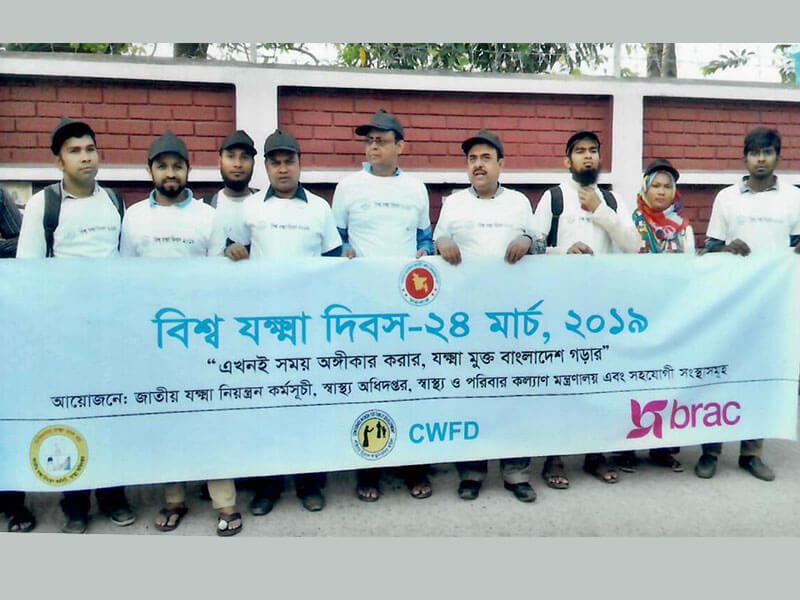Project Goal: End the Tuberculosis epidemic aiming to achieve a target 10 new cases /100,000/ per year in 2035, (projected 2015 baseline 225/100,000
Project duration: January 2006-December 2023
Project location: Dhaka north (Pallabi,manikdi, Tejgaon, Shahjadpur) and south city corporation ( Wari ,Gandaria, Doyagonj, Begumgonj, Lalbagh, Rayerbazar, East Jurain)
Financial partner: Global Fund to fight against AIDS, Tuberculosis and Malaria
Target beneficiaries: TB Presumptive, TPT and TB patients within 887,155 population in our catchment area.
Project briefing: The main purpose of the project is to control the infection of the tuberculosis disease in Bangladesh. The National Tuberculosis Program (NTP) of Bangladesh adopted the internationally acclaimed Directly Observed, Short-Course (DOTS) strategy in 1993 while implementing the 4th Population and Health Programme (1992-98) under the project “Further Development of TB and Leprosy Control Services” Bangladesh remains one of the 30 countries with the highest burden of TB and MDR TB. According to the Global TB report (2019). The annual incidence rate is estimated to be 221 per 100,000 populations of which it is estimated that 75% patients are notified and treated. The Government is committed to intensifying the TB control activities to sustain the achieved success and to reach the TB control targets linked to the health-related Sustainable Development Goals (SDG) and WHO END TB strategy. TB diagnosis and treatment in Bangladesh is completely free of cost to all the citizens of the country and will remain free. It should be mentioned that “Reduced the incidence of TB (All forms) by 50% by 2025 and 90% by 2035 (from 2015 baseline figure).
CWFD follows the following strategies to implement the project:
-
Early detection including universal drug -susceptibility
-
Treatment of all people with tuberculosis including drug-resistant tuberculosis and patient support.
-
Preventive treatment of persons with high risk
-
Improved documentation and data management
-
Social protection and actions on other determinants of tuberculosis


